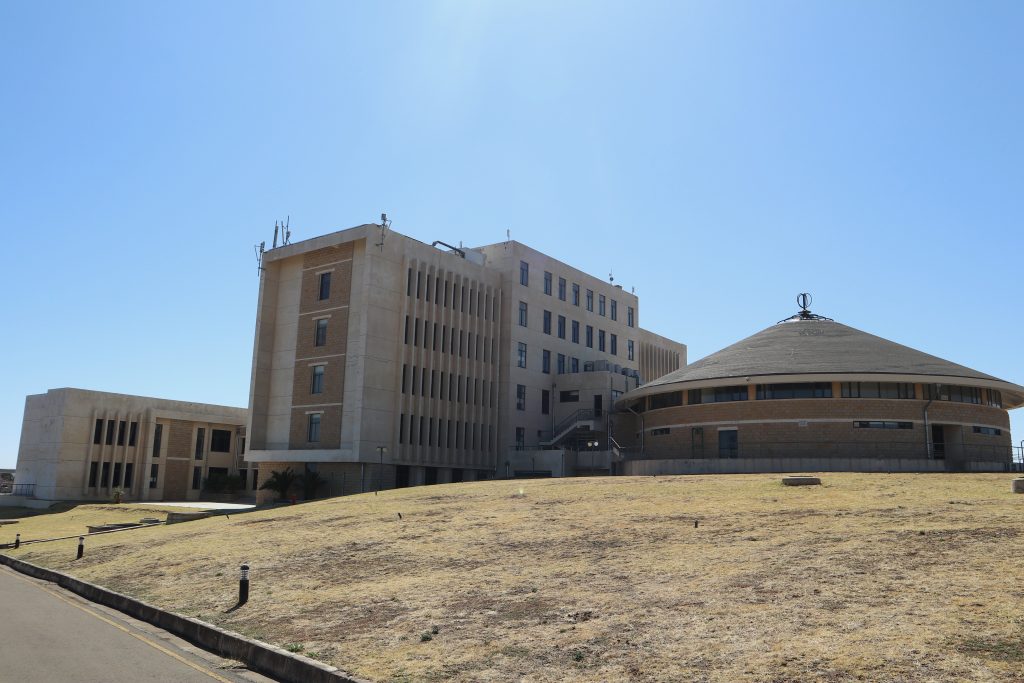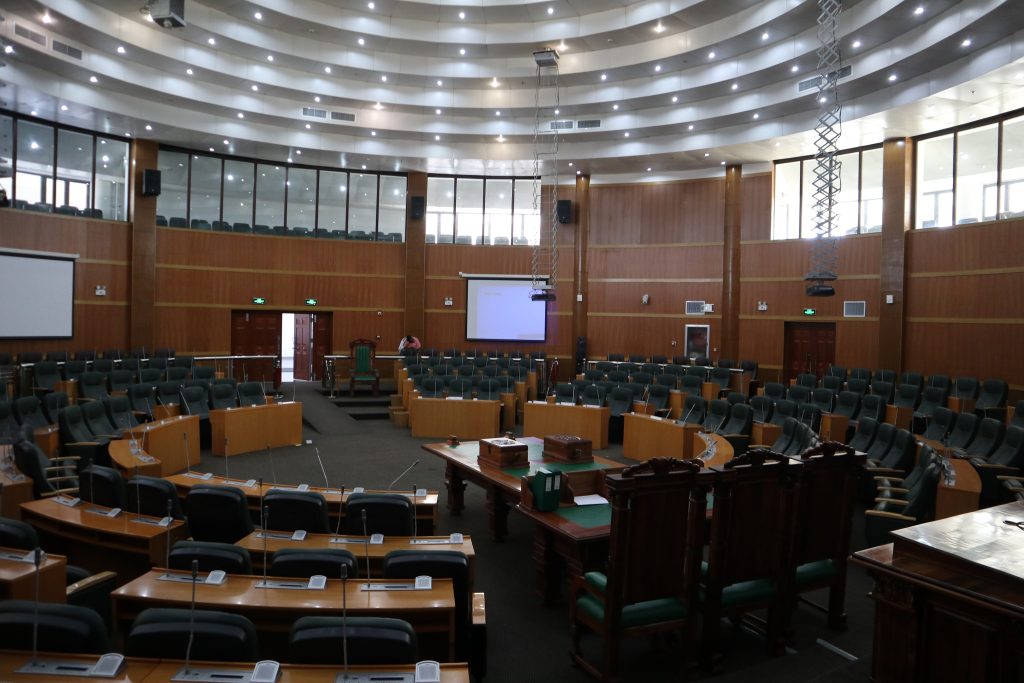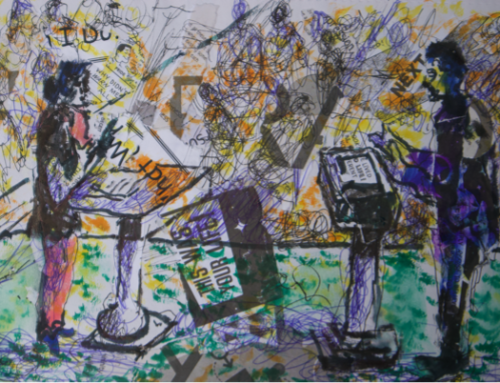China has been donating parliament buildings to African countries that do not yet have purpose-built facilities of their own. However, to date the impact of these buildings on the development of African parliaments has not yet been studied. Innocent Batsani-Ncube evaluates the impact of two such buildings on legislative development in Lesotho and Malawi.
The new purpose-built parliament facilities in Lesotho and Malawi have helped the two countries develop, expand and sustain a parliamentary ecosystem.
A parliamentary ecosystem here refers to the presence and maintenance of a network of public officials and representatives that work in a defined space, in close proximity to each other specialising in parliamentary activities. Both buildings, in providing a bespoke parliamentary built environment, have enabled the expansion of a cohort of public officials working on legislative business and facilitated the procedural activities of the institution in the two countries.
Normatively, parliament exists within an ecosystem of political institutions that includes political parties, electoral bodies, the executive arm of government and the courts, hence the process of establishing its distinct identity seems a given in established political dispensations. In nascent democracies such as Lesotho and Malawi the process of making the institutions and getting them to work takes place concurrently. The new parliament buildings provide us a prism with which to understand in practical ways the development of African parliamentary institutions.
Before China donated a new parliament building to each country, neither had purpose-built legislative facilities.
The Lesotho National Assembly operated from a building that had been constructed in 1909 and refurbished in 1959. The building did not have committee rooms and office space for parliament staff.
Malawi’s parliament was housed at the presidential palace in Lilongwe where the banqueting hall served as a debate chamber and tea rooms as committee rooms. Parliament rented office space in other buildings across the city.
Lesotho’s new parliament building complex is located on the outskirts of the Maseru central business district on Mpilo Hill. The complex covers 43,273 square metres and includes a four-storey building that houses the National Assembly offices, the debate chamber, the reception checkpoint, accessory buildings, parking lot, open grounds and a retaining wall.
The four-storey edifice has been divided into parliament facing departments. For instance, the Hansard section was allocated the first floor due to its proximity to the debate chamber. The floor also houses the offices of the Speaker, Prime Minister, Clerk and the Table offices. The second floor hosts the offices of the Deputy Speaker, Leader of Opposition and Library services. Committee rooms, the office of the Leader of the House — who is incumbent Deputy Prime Minister — and other support offices are on the third floor. The fourth floor houses committee clerks, accounts and public relations units.
The new Parliament of Malawi complex within the Lilongwe city centre consists of a front-end security reception office at the gate, a mini-stadium abutting Roman-style colonnades. The main structure which houses the chamber and administrative offices. The chamber is a large theatre, occupying 1,256 square metres, with 282 fitted seats for members and an upper floor gallery for visitors. Office allocation was designed to suit the core parliamentary business as the Speaker and other political leaders and officers collectively called officers of the House were allocated offices near or adjacent to the chamber for easy interaction.
Both buildings have provided a one-stop shop for parliament work and resulted in the restructuring of parliament as a somewhat formidable political institution.
After the Lesotho National Assembly moved into the new building in 2012 more specialised parliamentary departments were established and the staff complement increased from 50 to 110.
While it is difficult to ascertain that the building caused the expansion, the evidence points to the fact that it enabled it. More committee clerks were hired and further specialised departments that include a research unit, legal office and the Information and Communication Technology (ICT) department were established.
Similarly, in Malawi, the new building has allowed the institution to grow. The Parliament of Malawi now boasts over 200 staffers working on differentiated parliamentary roles.
Both buildings have facilitated the growth of the parliament committee – an essential aspect of contemporary legislatures. The two legislative institutions now boast in-house conference facilities for the work of committees. In Lesotho there are six committee rooms, while in Malawi there are five.
Prior to 2012, only the Public Accounts Committee was operational in Lesotho. It used to hold its sessions next to the old chamber in a building previously belonging to the British Embassy. Now there are sessional, portfolio and ad hoc committees. They all convene their sessions in the purpose-built parliamentary committee rooms.
Similarly, in Malawi, bespoke conference facilities in the new parliament building allow for at least four committee meetings at once. While in Lilongwe in 2019, I observed some of the parliamentary committees in session. These included the public accounts committee which reviews audit reports by the National Audit Office, the Public Appointments Committee which approves the appointments by the executive and the Budget Committee which is heavily involved in passing the national budget, tracking and monitoring government debt and projects. In addition, a Parliamentary Budget Office had just been established and was poised to work in collaboration with the Budget Committee.
The expansion of committee work coincided with the construction of the parliament buildings. In that regard, it is reasonable to infer that the two (the committees and the built environment) fed on, and into, each other. On one hand, the growth in parliament procedure required reliable space for it to take root, while on the other, the large parliament building needed the sustained parliament committee activities to avoid being white elephants.
The new buildings have also enhanced conspicuousness of the parliament and magnified the relationship between the public and the parliamentary institution. Considering that the African parliamentary institution is still developing, these new buildings play a useful mediatory function in understanding how ordinary people engage with their political institutions. For example, in Malawi, some members of the public praise the aesthetics of the building and its strategic location in the city centre. Citizens see the building as a sign of development and a dream come true for the Parliament of Malawi to have its own building that will facilitate the work of members of parliament.
In contrast, ordinary people in Lesotho encounter the parliament building from a distance. The building is located on Mpilo Hill on the south-western tip of the Maseru CBD. It is isolated from the mainstream urbanscape and inaccessible to most citizens. There are no public transport services on this route making it impossible for many ordinary citizens to even get to the building. The building is inaccessible because of the difficulty of walking up the hill. Seeing that they can only look at the building from afar but not get to it, some ordinary people have devised stratagems to catch the attention of the parliamentarians. There is a group of unemployed men who gather daily at a traffic circle in downtown Maseru, to catch the attention of parliamentarians who drive past that spot heading to the parliament building.
In both Lesotho and Malawi, the Chinese government funded buildings have become incubators of parliamentary development by providing bespoke debate chambers and conference facilities for the parliament committee system. While there is still more ground to cover in order to achieve legislative institutionalisation, the new facilities have become essential cogs in entrenching parliamentary practice in the two polities.
This article is drawn from a longer paper which is available free online:
Purpose-Built Parliament Buildings and the Institutionalisation of Parliament in Lesotho and Malawi, Parliamentary Affairs, 2022
Innocent has also published work on the new Parliament of Malawi building which you can read here.







